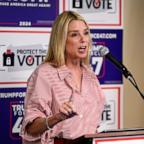
The year-to-year unpredictability of polling bias
We’ve talked a lot about how polling error is a fact of life in elections, but polling bias also tends to happen. Now, when we say bias, we don’t mean intentional efforts to put out polls that favor the preferred party of the pollster and/or sponsoring organization. Instead, polling bias indicates to what extent pollsters as a whole over- or under-estimated one party’s actual performance in the election.
For instance, we know that pollsters underestimated Trump’s position in the 2020 presidential election, to the tune of an average bias of about 4 points more Democratic than the real result. In 2016, the bias was similarly around D+3. So we’ve had two straight presidential cycles in which the polls have exaggerated the Democrats’ standing in the polls, which naturally makes people suspicious that we could once again see pollsters undershoot Trump’s actual vote share in 2024.
However, one only has to look a little farther back to see that polling bias does not consistently favor one party or the other. In 2012, pollsters undershot Barack Obama’s result in the presidential race by an average of about 2.5 points. And all told, the average bias in presidential elections dating back to 2000 is about a point more Democratic than the actual outcome. The broader point is, it’s nigh impossible to predict which direction polling bias will go ahead of the election. Pollsters are constantly working to try to overcome the challenges facing their industry, so expecting the past to be prologue when it comes to error and/or bias is a fool’s game.






